
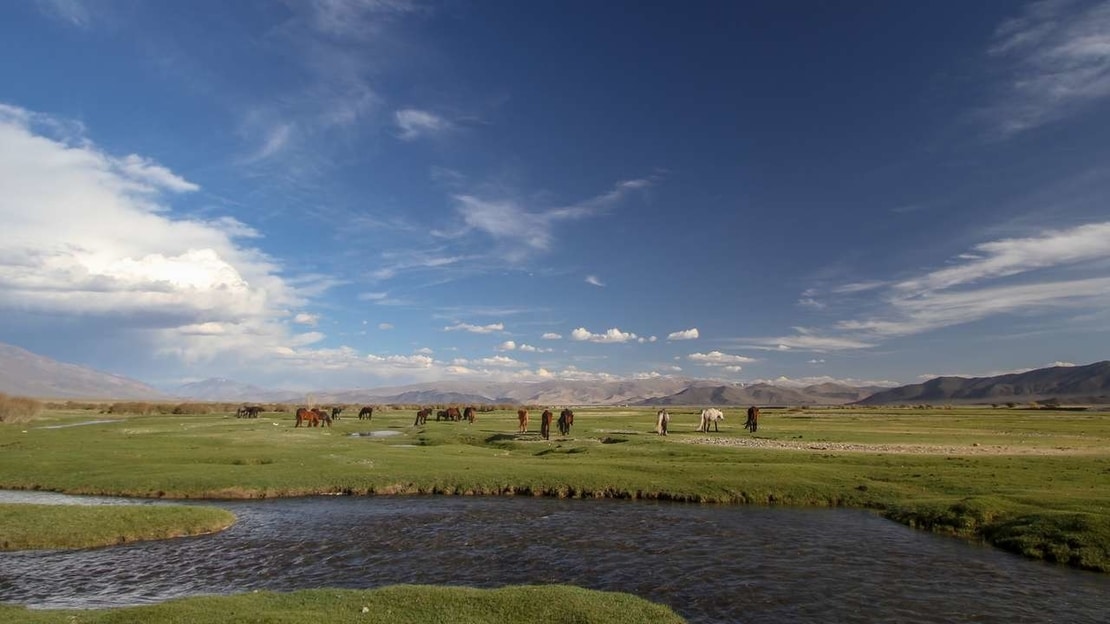
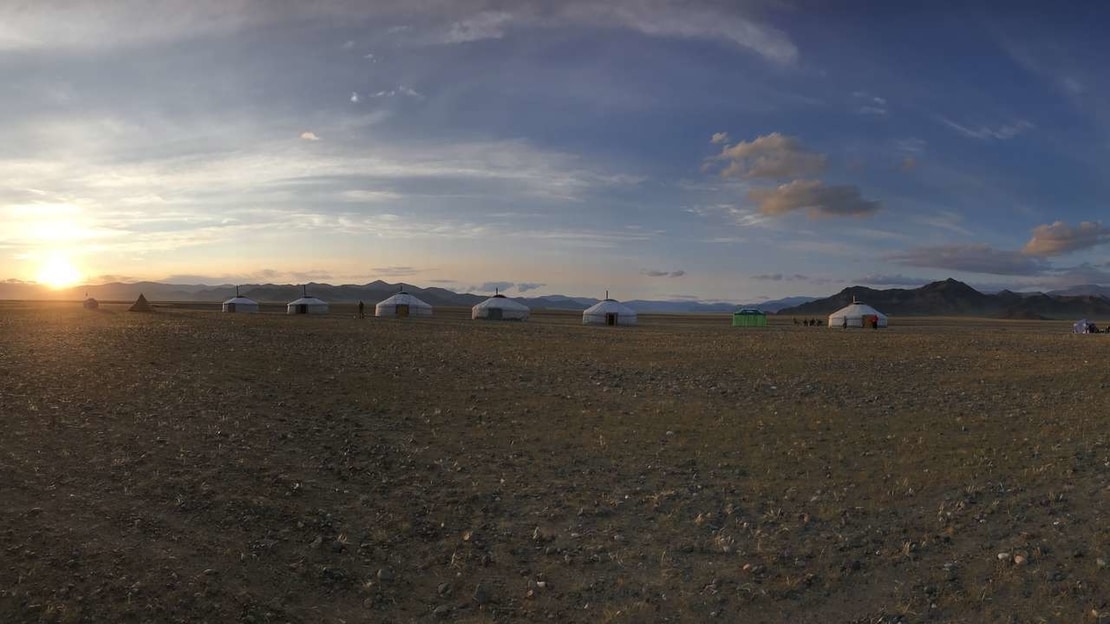
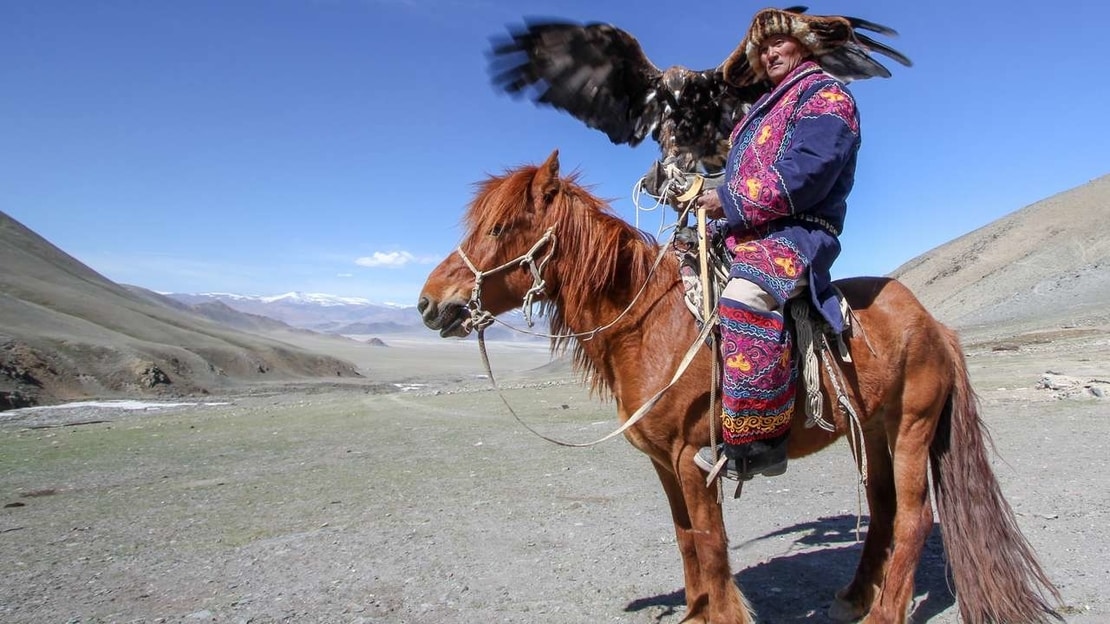
Journey into remote western Mongolia, home to epic scenery and nomadic people
- Camp in luxury ger tents amidst breath-taking panoramic landscapes
- Search for snow leopard, wolverine, argali sheep, ibex and a wealth of raptors
- Explore lush pastures, vast plains, snow-capped peaks, colossal lakes and sprawling sand dunes
- Spend time with local nomadic families learning about their way of life and culture
This trip gives a fascinating insight into both Kazakh and Mongolian culture, spending time in the Kazakh enclaves of Hokh Serkhiin Nuruu, Chigertei and Khovd combined with a spectacular journey into and across the Great Lakes Basin to Dorgon Nuur.
Itinerary at a glance
Day 1 - Ulaanbaatar
After settling into your accommodation meet your guide for some gentle sightseeing of the city. Walk to the National Museum of Mongolia for a journey through Mongolian history, from the Neolithic era to the present day. Offering a wonderful overview of Mongolian culture, the museum is home to a range of exhibits from the Stone Age as well as a wonderful collection of costumes and jewellery.
Also visit the Choijin Lama Temple. Built in the early 20th century, this beautiful complex is situated in the centre of the city and is now a museum housing a fine collection of art and religious relics, including tsam masks and thangka paintings.
The capital and largest city by some distance, Ulaanbaatar has changed drastically since the turn of the millennium. Construction has boomed and as a consequence the face of the city has changed.
Despite this, more than half of residents still live in traditional gers, showing that nomadic culture remains well-entrenched within this modern city.
Founded by nomadic Buddhist monks, Ulaanbaatar didn't settle in a permanent location until the 18th century. It then took until the 20th century for the city to really develop, fuelled by its industrial growth.
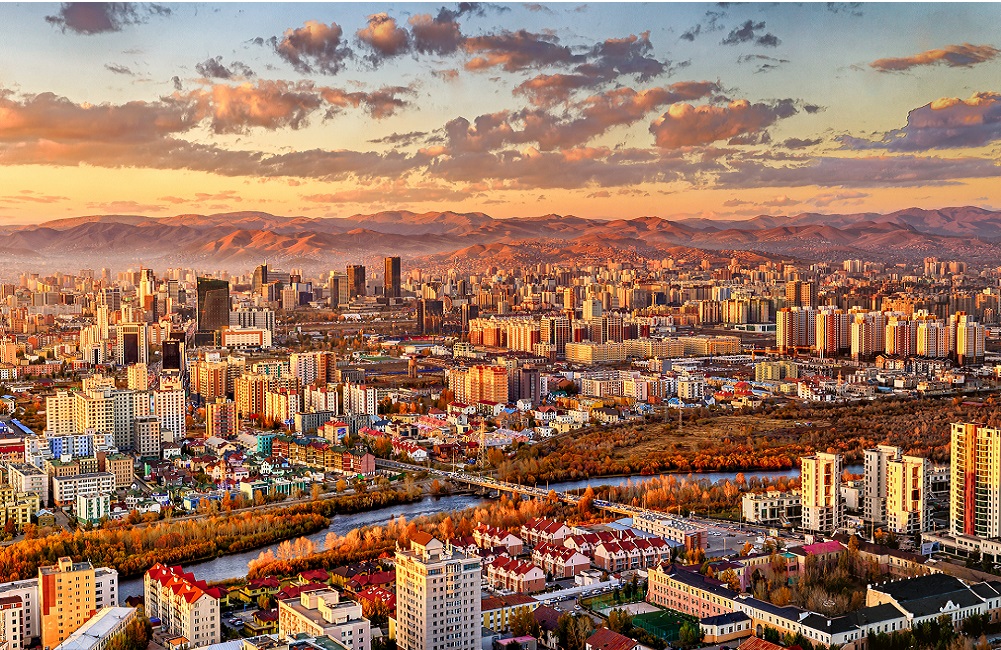
Day 2 - Ulaanbaatar - Ulgii - Hokh Serkhiin Nuruu National Park - Deluun
Fly Ulaanbaatar to Ulgii. Drive from Ulgii to Deluun (Road Journey).
Upon arrival into Ulgii, which is one hour ahead of Ulaanbaatar, travel overland to Deluun, a journey of approximately three to four hours. Deluun is a Kazakh village surrounded by the beautiful scenery of Doroo and Tolbo Lakes and Tolbo Lakes with the magnificent Sayriin Uul Mountains as the backdrop.
Conservation Briefing
Meet with the director and head ranger of this protected area who will give a briefing on recent conservation initiatives.
Day 3 - Hokh Serkhiin Nuruu National Park
Ikh Yamaat Valley
This morning venture on foot into the Ikh Yamaat (Big Goat) Valley, where with luck we will see Siberian ibex and possibly argali sheep, the largest wild sheep in the world. Both are common prey for snow leopards, known to frequently visit this valley which extends deep into the heart of the mountain range. The Altai Research Institute, under the supervision of Dr Barry Rosenbaum, have conducted holistic wildlife research here for a decade and further collaring of snow leopards as well as ibex and wolverines are planned.
Today you will meet with one of the famous Kazakh eagle hunters of the area. Hunting season is October - November, at which time there are several eagle festivals in western Mongolia. Despite being out of season, the opportunity to meet a proud, Kazakh eagle hunter with his trusted golden eagle on his arm is a memorable encounter.
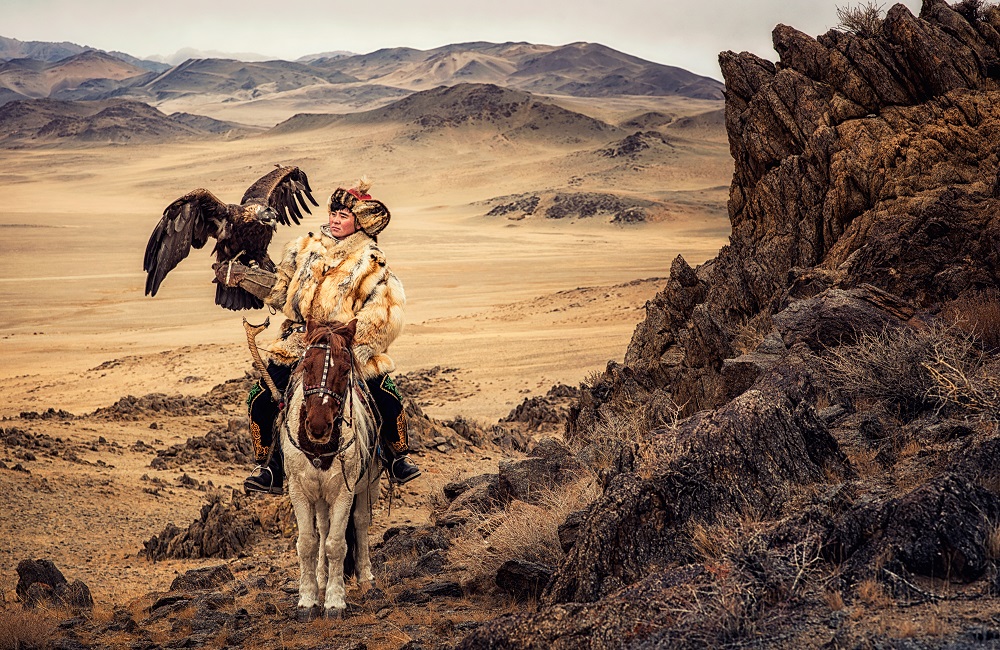
Day 4 - Hokh Serkhiin Nuruu National Park - Chigertei
Bag Yamaat Valley
This morning we will embark on a walk in the Bag Yamaat Valley, an elevated glacial gorge cutting into the southern Hokh Serkhiin Nuruu mountains and known for its golden eagles, huge lammergeiers (or bearded vulture) and Altai saker falcons. Venturing into this valley also gives an opportunity to explore more core snow leopard habitat.
Travel to Chigertei Protected Area
This afternoon your camp will move location to the Chigertei Valley towards the border with China and the main ridge of the Altai Mountains. The drive will take around two hours travelling upstream, following the Buyant and Chigertei Rivers until we reach Chigertei Lake.
Chigertei Protected Area
Your new camp will be located amidst the summer pastures of local Kazakh nomads who will be busy herding their sheep and goats. The Kazakh people here are Sunni Muslims and retain their traditional culture as nomadic pastoralist's. Among them are prominent eagle hunters, who hunt corsac fox and other prey with their eagles during the winter season and participate in various eagle festivals held in spring and autumn in Bayan-Ulgii.
Day 5 - Chigertei
Activities in Chigertei Protected Area
The next two days will be spent exploring this remote part of the world. Chigertei National Park borders the Keke Tuo Hai National Park on the western side of the Altai Divide in China. While in Chigertei, it is possible to check the camera traps set throughout the area for researching the range and activities of wolverine by the Wolverine Foundation, in collaboration with the Altai Institute. Such camera traps also capture images of red deer, Siberian roe-deer, livestock, ptarmigan, wolves, pine marten, snow leopard and the enigmatic pallas's cats. Horses will be available for both days for those guests wishing to ride to more remote parts of the National Park, including some amazing lakes bordering China.
Day 6 - Chigertei
You will be staying at a Wilderness Ger Camp.
Day 7 - Chigertei - Khovd
Drive from Chigertei to Khovd (Road Journey).
Today we will pack up camp and head back to the town of Khovd, a journey which will take over five hours. If river levels permit, you will drive the southern route around the Hokh Serkhiin Nuruu and through the Buyant River Canyon. Carving its way through a maze of ranges and canyons it emerges into the Great Lakes Basin, east of the Altai ranges. Some amazing archaeology from Scythian times will be seen.
Khovd is a multi-ethnic town, with several west Mongol ethnic groups and Kazakhs living here. This diversity is seen in the range of Buddhist temples and mosques in the town. The town of Khovd existed during Manchurian times but today is renowned for its university and iconic statue of a three and a half metre riding boot in the middle of town.
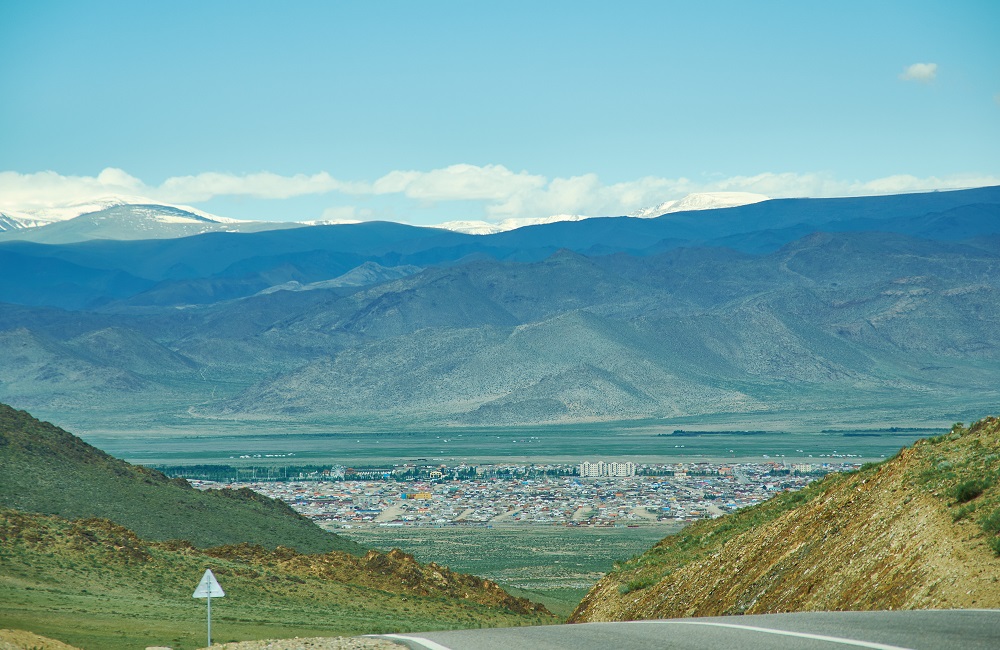
Day 8 - Khovd - Khar Us Nuur National Park
Travel Overland to Dorgon Lake
After breakfast, we will depart Khovd and traverse the northern shore of the Khar Us Nuur National Park, visiting Dorgon Lake with its extensive wetlands and amazing abundance of water birds. Beyond the lake you emerge onto the vast Mongol Els (dune-sea) and the Dorgon plains, a large flat expanse of arid Gobi steppe. The plains are home to the critically endangered saiga antelope, a Pleistocene relic. Throughout western Mongolia you will see cairns dotted across the landscape. These are known locally as 'Ovoo' and are altars or shrines, each with its own spiritual significance which are venerated by the local people. On arrival at the lake you have the chance to see one of these cairns and should you wish, take a dip in the cool waters to wash away the dust.
Day 9 - Khar Us Nuur National Park
Dorgon Lake and Mongol Sands
In the distance across the calm blue surface of the lake are the snow-capped Jargalant Hairkhan Mountains and our back-drop is the longest sand dune in Mongolia, emptying itself into Dorgon Lake. Sandy beaches, and domestic Bactrian camels add to the spectacular panoramic scene.
The lake is home to fish such as Altai osman and graylings with two thirds of the fish species being endemic. A diverse range of wildfowl also frequents the lake such as the ruddy shelduck, Mongolian gulls, great pallas's gulls and perhaps the rare relict gull. There is also the possibility of rare Dalmatian pelicans, one of the largest of flying birds as well as white-tailed eagles. Large congregations of pallas's sandgrouse sometimes descend here to drink and soak their feathers so as to carry water back to their young.
We will take time to meet with local people, the majority of whom are from the Halkh Mongol ethnic group and are quite different to the Kazakhs met previously.
Day 10 - Khar Us Nuur National Park - Khovd
Travel overland from Dorgon Lake to Khovd
Today we will return to Khovd via the village of Chandmani, famous for its claim of being the place of origin of throat singing (hoomii). There will also be more opportunities to spot saiga antelope as well as goitred gazelle.
Day 11 - Khovd - Ulaanbaatar
Fly Khovd to Ulaanbaatar.
Day in Ulaanbaatar
Mongolian domestic flights are notoriously unreliable, with only two aircrafts servicing the whole country. As such we have factored in an extra day in Ulaanbaatar, as a buffer day, to allow for any unexpected delays or changes in schedule. This extra day will also allow you time to explore the city a little more.
Day 12 - Ulaanbaatar
Morning Sightseeing of Ulaanbaatar
This morning visit Gandan Monastery, the liveliest of Mongolia's monasteries and the seat of Buddhism in Mongolia. Also visit Bogd Khan's Winter palace, which is a series of beautiful, traditional buildings in which Mongolia's last king resided until his death early this century. It is now a museum displaying fascinating artefacts and costumes associated with the king, as well as his own collection of European furniture and stuffed animals.
Day 13 - Ulaanbaatar
Tour ends.
Start your journey
Duration: 13 Days
Tour Expert: Jonathan Stacey
Travel from: 13th to 25th June 2020
Enquire for more information and availability.
Call us on 1800 047 047 to book.
Terms & Conditions Prices based on per person double/twin share. Prices may fluctuate if surcharges, fees, taxes or currency change. Offer is subject to availability. Please check all prices, availability and other information with your travel consultant before booking. Bookings must be made direct with Concierge Traveller. Package cancellation fees apply. All savings and bonus nights (if applicable) are included in the advertised price. Offers may be withdrawn without notice and are not combinable with any other offers unless stated. Local city taxes may apply.
We’re here to listen and inspire
to help you have the holiday of your lifetime.
We can do it all – advise, plan and book and we look after you on the journey.
Meet our peopleContact Concierge Traveller - A Virtuoso Travel Agency
Toll free 1800 047 047
International +61 2 8270 4800
Concierge House
332 Kent Street
Sydney NSW 2000
Australia
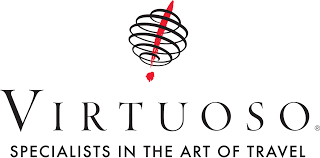
We are open 24hrs a day
-
London
-
Bangkok
-
Sydney
-
Honolulu
-
Rio de Janeiro

